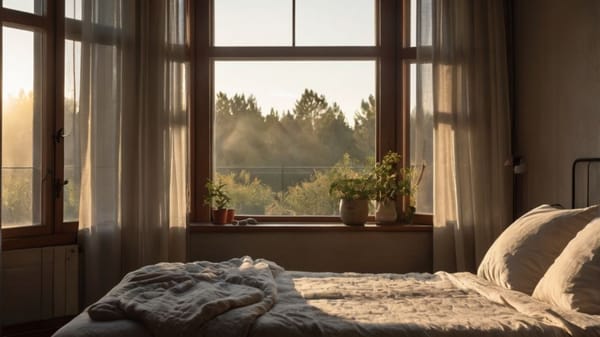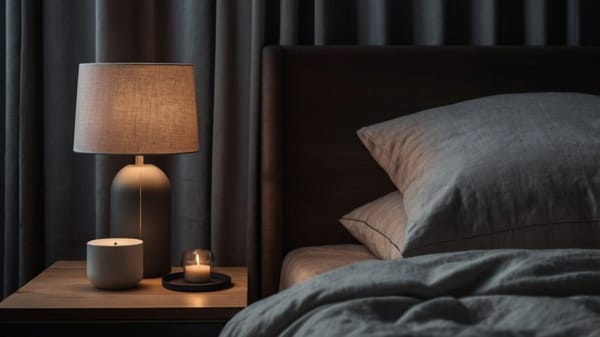Should You Nap During the Day? The Right Way to Do It
Feeling drained after lunch? Learn the science-backed way to nap for energy, clarity, and better recovery—no burnout, just results.

Ever hit a wall after lunch and wonder why your energy disappears? That slump isn’t failure—it’s biology. Your brain’s not shutting down; it’s signaling for recovery. The good news?
A smart nap can reboot your focus, boost your mood, and sharpen your edge for the rest of the day.
Done right, it’s one of the simplest, most science-backed ways to improve how you feel and perform. Let’s show you how to nap like it matters—because it does.
The Science Behind Midday Fatigue
Your body runs on rhythms—specifically your circadian rhythm, a roughly 24-hour cycle that affects everything from hormones to body temperature to alertness.
While you may think your energy dips are random or purely from a bad night’s sleep, they often align with a natural lull built into your biology.
Most people experience a significant dip in alertness between 1 p.m. and 3 p.m.. That’s not a weakness—it’s an evolutionary trait.
In fact, many cultures have leaned into this with structured rest periods, like Spain’s siesta or Japan’s “inemuri,” which roughly translates to "sleeping while present."
Modern life may not give you the luxury of a midday shutdown, but that doesn't mean you can't adapt it to your routine.
What matters most is learning how to nap efficiently—because not all naps are created equal.

The Ideal Nap Length
You’ve got options when it comes to nap duration, but the smartest choice for most people is the 10- to 20-minute power nap. It’s short enough to avoid grogginess, long enough to refresh your mind.
Here’s what happens during that window: you enter the early stages of non-REM sleep, which help clear brain fog, improve focus, and reduce cortisol levels. It’s like hitting the reset button on your brain without falling into a deep sleep cycle.
Napping for 30 to 60 minutes? That lands you in deeper stages of sleep, where memory consolidation starts kicking in. But there’s a tradeoff.
If you wake up in this stage, you’ll likely feel groggy—what sleep researchers call sleep inertia. You’ll recover from it, sure, but if you’ve only got a tight schedule, it’s not ideal.
A 90-minute nap, on the other hand, takes you through a full sleep cycle—light sleep, deep sleep, and REM. This can help with learning, physical recovery, and emotional regulation.
But it's not for casual napping. Save that for when you're underslept or doing demanding physical or mental work that truly justifies the longer rest.
The Best Time to Nap
The time you nap matters just as much as how long. Nap too late, and you risk messing with your nighttime sleep. Aim to nap before 3 p.m.—that keeps your body clock happy and your night’s rest intact.
The ideal timing also depends on your sleep chronotype—whether you’re a morning person or a night owl.
Early birds will benefit more from a nap around 12:30 to 1 p.m., while night owls might hit their dip closer to 2:30 p.m.. Either way, lean into that natural drop in energy instead of fighting it.
How to Nap Like a Pro
You don’t need a nap pod or blackout curtains to do this right. Just optimize the basics:
Environment
Find a quiet, low-light space. Noise-canceling headphones or an eye mask can help, especially if you’re in a shared space or an office setting.
Pre-nap ritual
Your brain needs cues. Before you nap, avoid screens for a few minutes. Slow your breathing. You’re not trying to force sleep—you’re creating the conditions for it.
The caffeine hack
Here’s a trick you’ll want to try: drink a cup of coffee right before your nap. It takes about 20 minutes for caffeine to hit your system, so by the time you wake up, it kicks in and amplifies your alertness.
This “caffeine nap” is wildly effective—and backed by research from both sports science and cognitive performance studies.
Set a timer
Don’t just lie down and hope for the best. Set an alarm for 20 minutes max if you’re going for a power nap. That helps you avoid going too deep and waking up sluggish.
Don’t stress if you don’t fall fully asleep
Here’s the truth: even just lying down with your eyes closed, without actually sleeping, can lower your cortisol and reduce sensory overload. Your brain still benefits from the downshift.
Who Should Nap (and Why It Works)
If you’re training hard, mentally grinding, or simply burning the candle at both ends, napping can be a game-changer.
Athletes use naps to speed up physical recovery. Creatives and engineers nap to stay sharp and flexible in their thinking. Entrepreneurs use them to reset and avoid burnout.
This isn’t about indulgence—it’s about smart recovery. When you build brief naps into your day, you create space for your brain to consolidate information, regulate emotion, and maintain peak performance.
And yes, it works even if you got a decent night’s sleep. It’s not about replacing nighttime sleep. It’s about adding a high-impact bonus round.
How to Fit It Into a Real Schedule
If you’re working remotely or have a flexible job, block 20 minutes on your calendar after lunch. Treat it like a non-negotiable reset, not optional downtime.
If you're in an office or out in the world? Get creative. Parked car. Quiet conference room. Even a five-minute eyes-closed recharge at your desk can help.
Don’t let perfect conditions be the reason you skip it—this is about momentum, not perfection.
If you’re already using breaks to scroll social or snack aimlessly, repurpose that time into something with real payoff.
Final Thoughts
You’re not tired because you're broken. You’re tired because you’re human. And humans are built to need rest—strategically.
A 15-minute nap won’t steal your time. It’ll give it back, in focus, clarity, and better mood. The research is in, and the benefits are real. All you have to do is use them.
Start now. Pick a time. Protect the space. Close your eyes. Watch your energy shift. This is how smarter sleep starts—midday, not midnight.




